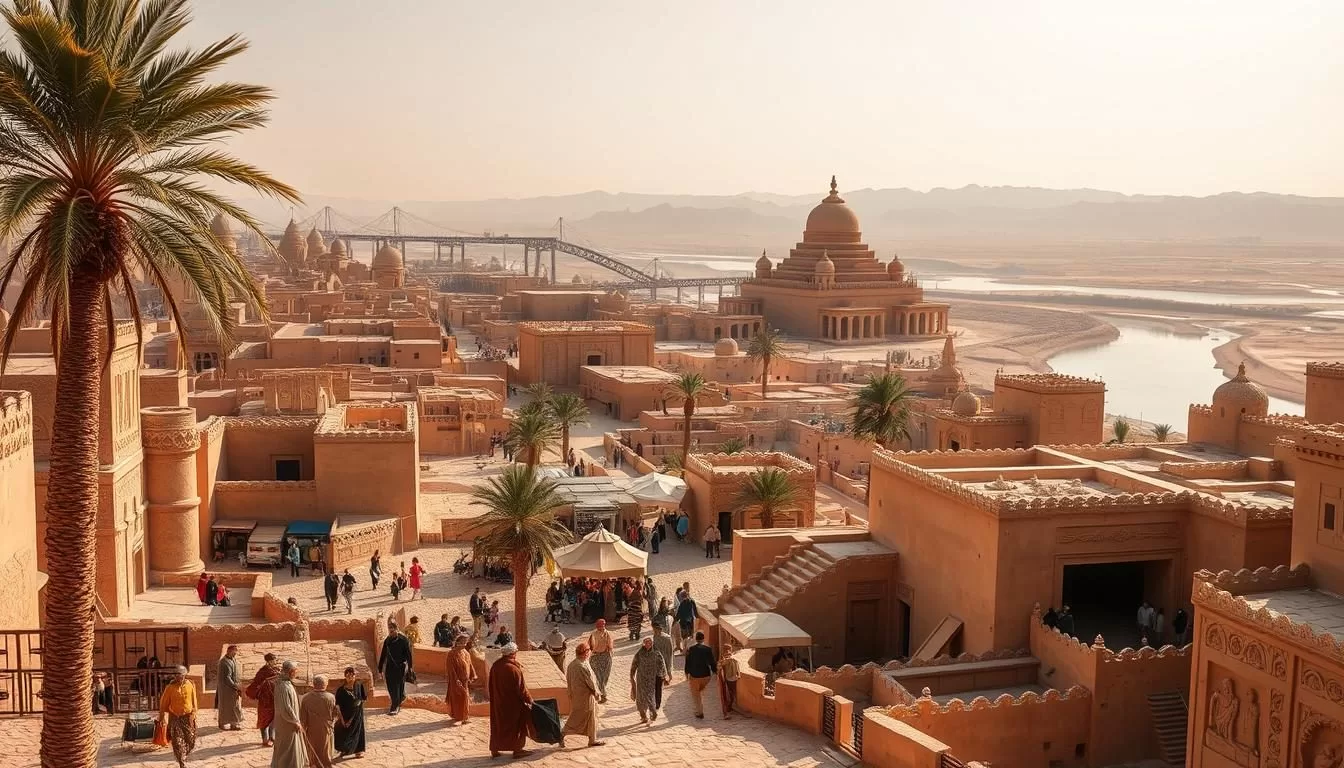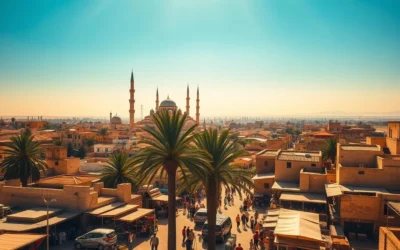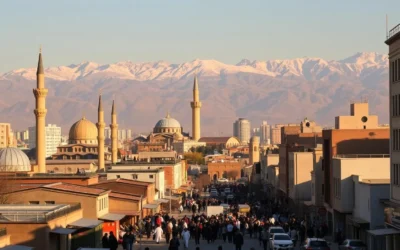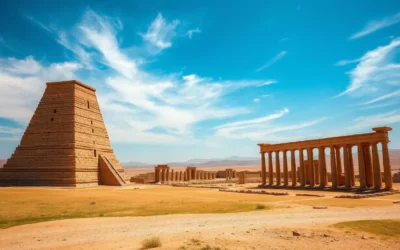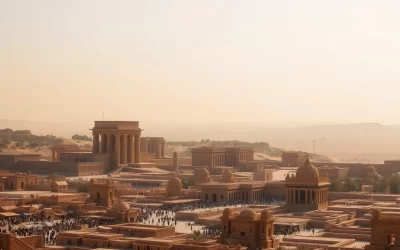Discover a place where ancient history meets vibrant culture. Iraq, home to some of the world’s oldest civilizations, offers a unique blend of archaeological wonders and modern-day experiences. From the towering Ziggurat of Ur to bustling local markets, this region is a treasure trove for curious travelers.
Explore the heart of Mesopotamia, where the history of the Sumerians, Babylonians, and Assyrians comes alive. Visit iconic sites like the Great Mosque of Samarra and the Citadel of Erbil, a UNESCO World Heritage Site. Each location tells a story of a city that has stood the test of time.
Planning your trip is easier than ever, with visa-on-arrival options and affordable transportation. Whether you’re navigating by taxi or exploring on foot, Iraq’s rich legacy and warm hospitality await.
Discover the Ancient Wonders of Ur
Uncover the secrets of Ur, a cornerstone of Mesopotamian culture. This ancient city was once the heart of the Sumerian civilization, where early innovations in culture and technology took shape. From its founding to its cultural influences, Ur played a pivotal role in shaping the region’s development.
One of the most iconic sites in Ur is the Great Ziggurat, built around 2100 BCE by King Ur-Nammu. This towering structure, dedicated to the moon god Nanna, stands as a testament to the city’s religious significance. The Ziggurat’s base measures 64 meters by 46 meters, and while only the lower levels remain, it continues to awe visitors.
Beyond the Ziggurat, the city is home to the Royal Cemetery, where graves of kings and queens reveal the wealth and status of Ur’s past. These archaeological relics offer a glimpse into the daily life and traditions of one of the world’s earliest civilizations.
Planning your trip to Ur is straightforward, with accessible transportation options like taxis and guided tours. The best time to visit is from October to March, when the weather is more comfortable for exploring this historic place.
Marvel at the Great Ziggurat of Ur
Step into the shadow of the Great Ziggurat of Ur, a marvel of ancient engineering. This towering structure was built around 2100 BCE and remains one of the most iconic landmarks of Mesopotamia. Its three-tiered design showcases the advanced architecture of the Sumerians, who constructed it as a sacred site dedicated to the moon god Nanna.
Structure and Design
The Great Ziggurat stands at an impressive height, with its base measuring 64 meters by 46 meters. Its multi-tiered construction reflects the Sumerians’ mastery of building techniques. The ziggurat’s staircases, once used for religious processions, allow visitors to ascend and connect with the past.
Religious Significance
This ancient place was more than just a building; it was a spiritual hub. Rituals honoring Nanna were performed here, making it a focal point of Sumerian religious life. Today, it serves as a reminder of the region’s rich cultural and spiritual heritage.
Planning your trip to the Great Ziggurat is simple. Taxis and guided tours are readily available, offering a convenient way to explore this historic site. A knowledgeable guide can provide deeper insights into its significance and history.
Explore Royal Tombs and Archaeological Sites in Ur
Delve into the royal tombs of Ur, where ancient Sumerian history comes alive. Discovered in the 1920s by Leonard Woolley, these tombs offer a fascinating window into the past. They reveal the grandeur of Sumerian royalty and their intricate burial practices.
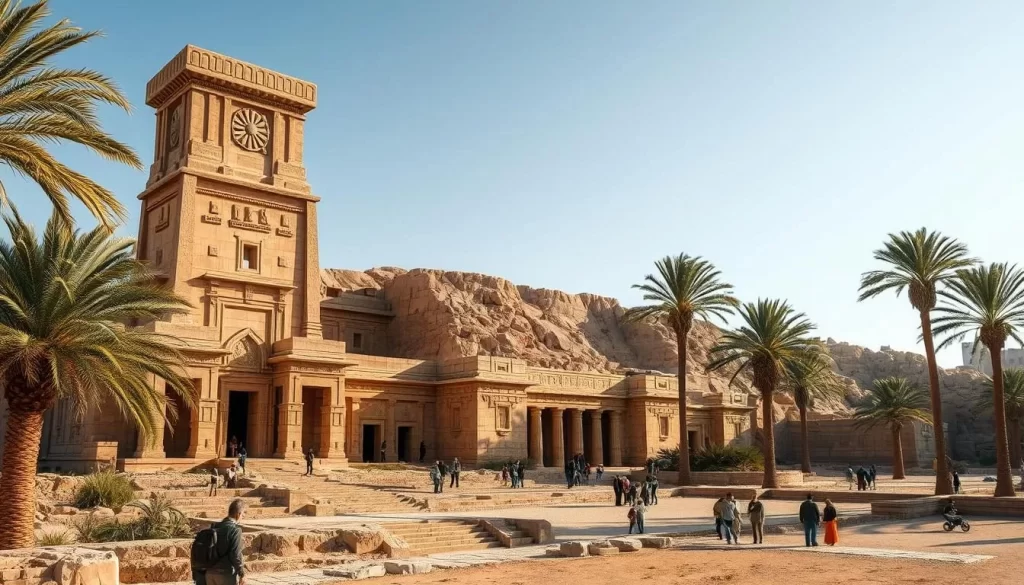
Among the most remarkable finds are the Standard of Ur and the Queen’s Lyre. These artifacts showcase the artistry and craftsmanship of the Sumerians. The Standard of Ur, a mosaic of shell and lapis lazuli, depicts scenes of war and peace. The Queen’s Lyre, adorned with gold and precious stones, reflects the musical traditions of the city.
The meticulous excavation process led by Woolley uncovered over 1,800 graves, including 16 royal tombs. These discoveries provide valuable information about Sumerian funerary customs. From elaborate burial chambers to offerings of gold and jewelry, each detail tells a story of a rich and sophisticated culture.
Visiting these tombs is a unique experience. You can explore the Royal Cemetery and see the artifacts at the nearby museum. Hiring a knowledgeable guide enhances your understanding of this historic site. Taxis are readily available for a convenient trip to the location.
These royal tombs are more than just a place of burial. They are a testament to the Sumerians’ reverence for their leaders and their belief in the afterlife. By exploring these tombs, you gain a deeper appreciation for the cultural and historical legacy of this ancient city.
Visit Ancient Residential Areas and Historic Streets
Walk through the ancient streets of Ur and feel the pulse of daily life from thousands of years ago. These residential areas offer a rare glimpse into how people lived, worked, and connected in one of the world’s earliest cities. The layout of Ur’s neighborhoods reflects early urban planning, with narrow streets and communal spaces that fostered social and economic activities.
The traditional mud-brick houses are a testament to the ingenuity of Ur’s inhabitants. These homes often featured central courtyards, providing ventilation and light while maintaining privacy. The design of these houses reveals how ancient people adapted to their environment, creating functional and comfortable living spaces.
As you wander through these historic streets, you’ll notice how they were designed to bring people together. Markets, workshops, and gathering spots were strategically placed, making them hubs of daily life. This urban layout not only supported commerce but also strengthened community bonds.
Exploring these residential zones offers a tangible connection to the past. You can almost hear the echoes of conversations and the clatter of tools as you walk through these ancient areas. Hiring a knowledgeable guide can enhance your experience, providing deeper insights into the lives of Ur’s inhabitants.
For a seamless trip, consider using a taxi to reach these historic sites. The journey itself is part of the adventure, offering a chance to reflect on the enduring legacy of this remarkable place. As you explore, you’ll gain a deeper appreciation for the ingenuity and resilience of those who called Ur home.
Plan Your Visit: Best Times and Weather Considerations
Planning your journey to Ur requires careful consideration of the weather and timing. The region’s climate can vary significantly throughout the year, making it essential to choose the right time for your trip. By understanding the seasonal patterns, you can ensure a comfortable and enjoyable experience.
Seasonal Tips for a Comfortable Trip
The best time to visit Ur is between November and March. During these months, temperatures are milder, ranging from 15°C to 25°C, making it ideal for exploring outdoor sites. Summer months, from June to August, can be extremely hot, with temperatures often exceeding 50°C, which can make travel uncomfortable.
To avoid the heat, plan your activities early in the morning or late in the afternoon. This way, you can explore the city’s ancient wonders without being overwhelmed by the midday sun. Checking local weather forecasts before each day of your trip is also a smart tip to stay prepared.
Here’s a quick overview of Ur’s seasonal weather patterns:
| Season | Months | Temperature Range | Travel Tips |
|---|---|---|---|
| Spring | March – May | 20°C – 30°C | Pleasant weather, ideal for sightseeing |
| Summer | June – August | 40°C – 50°C+ | Avoid midday heat, stay hydrated |
| Autumn | September – November | 20°C – 30°C | Comfortable for outdoor activities |
| Winter | December – February | 10°C – 20°C | Cool and mild, perfect for exploration |
For a seamless trip, consider hiring a local guide who can provide valuable information about the best times to visit specific places. Additionally, using a taxi for transportation can save you time and energy, especially during the hotter parts of the day.
By planning your visit wisely, you can make the most of your time in Ur and enjoy its rich history without the discomfort of extreme weather. Whether you’re exploring the Great Ziggurat or wandering through ancient streets, smart timing ensures a memorable experience.
Navigating Iraq: Transportation, Taxis, and Guided Tours
Getting around this region is easier than you might think, with a variety of transportation options to choose from. Whether you prefer the convenience of a taxi or the insights of a local guide, there’s a way to suit every traveler’s needs.
Taxis are a popular choice for getting around cities. They are readily available and relatively affordable compared to Western standards. However, most taxis don’t have meters, so it’s essential to negotiate fares before starting your trip. Shared taxis are another cost-effective option, especially for traveling between smaller towns and villages.
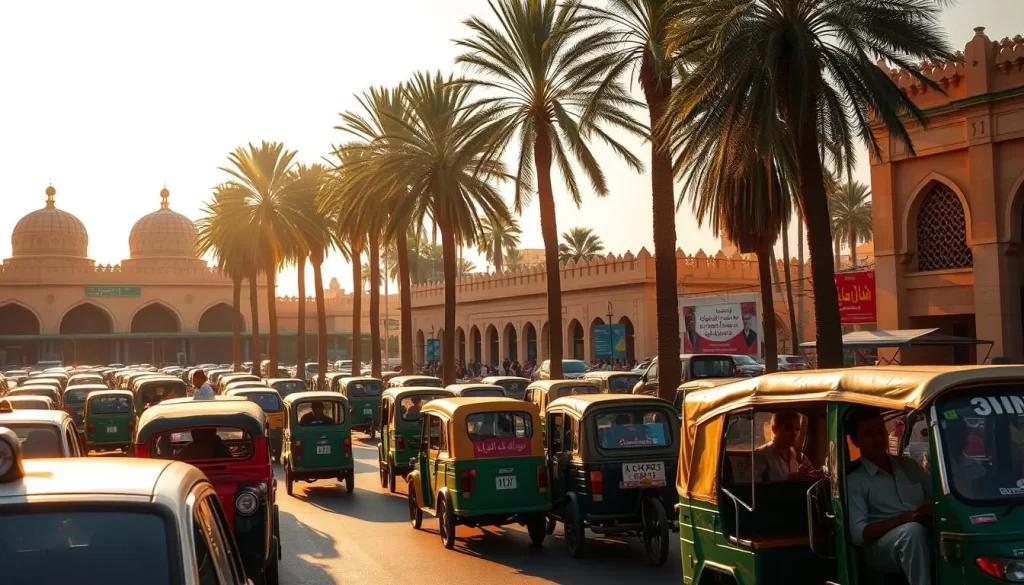
For longer distances, buses connect major cities like Baghdad, Basra, and Mosul. These intercity buses are budget-friendly and offer a glimpse into local life. However, schedules can be inconsistent, so it’s wise to plan ahead.
Guided tours are an excellent way to enhance your experience. Local guides provide valuable information about historical sites and help navigate security checkpoints. This is particularly useful when visiting restricted locations like Hatra, where travel permits are required.
Here are some practical tips for your travel:
- Always agree on a fare before taking a taxi to avoid surprises.
- Carry cash, as credit cards are rarely accepted for transportation.
- Use ride-hailing apps like Careem in urban areas for convenience.
- Plan your trip during cooler months for a more comfortable experience.
By using local guides and planning ahead, you can make the most of your trip. Whether you’re exploring ancient ruins or bustling markets, the right transportation choices will ensure a smooth and memorable journey.
Local Customs and Safety Tips in Your Iraqi Adventure
Your adventure here is enriched by understanding local customs and safety measures. Respecting traditions and staying informed ensures a smooth and enjoyable journey. This region offers a unique blend of cultural richness and historical depth, making it essential to embrace both etiquette and practical tips.
Cultural Etiquette
When visiting this place, dressing modestly is key. For both men and women, covering shoulders and knees is recommended, especially when entering religious sites like a mosque. This shows respect for local values and helps you blend in as a visitor.
Interacting with local people requires politeness and patience. A simple greeting in Arabic, such as “As-salamu alaykum,” can go a long way. Always ask for permission before taking photos, particularly of individuals or religious structures. This gesture is appreciated and avoids misunderstandings.
“Respecting local customs not only enriches your trip but also fosters meaningful connections with the people you meet.”
Security Measures
Staying safe during your travel involves being aware of your surroundings. Follow local advice and stay updated on travel advisories. This ensures you’re prepared for any situation and can navigate the region with confidence.
When using a taxi, agree on the fare beforehand to avoid surprises. For longer journeys, consider hiring a guide who can provide valuable information and help you navigate checkpoints. This is especially useful in sensitive areas.
| Tip | Details |
|---|---|
| Dress Modestly | Cover shoulders and knees, especially at religious sites. |
| Ask for Permission | Always request consent before taking photos of people or religious places. |
| Stay Informed | Check travel advisories and follow local advice for security updates. |
| Use Reliable Transport | Agree on taxi fares in advance or hire a guide for longer trips. |
By embracing these customs and safety measures, you’ll enhance your experience and ensure a memorable journey. Understanding the local way of life not only enriches your trip but also helps you connect with the heart of this remarkable place.
Immerse Yourself in Vibrant Markets and Local Life
Step into the heart of Ur’s bustling markets and feel the pulse of local life. These vibrant streets are a sensory feast, where the aroma of spices mingles with the chatter of vendors and shoppers. Every corner of the market tells a story, offering a glimpse into the daily rhythm of this historic city.
Wandering through the bazaars, you’ll find traditional crafts, colorful textiles, and handcrafted goods. Each stall is a treasure trove of culture, showcasing the skills and creativity of local artisans. Engaging with vendors is not just a shopping experience but a chance to connect with the heart of Ur’s community.
The interplay of ancient sites and modern market life creates a dynamic atmosphere. As you explore, you’ll notice how the past and present coexist seamlessly. This blend of tradition and modernity makes Ur a unique place to visit, offering something for every visitor.
Here are some highlights of your market adventure:
- Traditional crafts and textiles that reflect the region’s rich heritage.
- Spices and local delicacies that tantalize your taste buds.
- Opportunities to interact with friendly vendors and learn about their crafts.
For a seamless trip, consider hiring a guide who can provide insights into the market’s history and hidden gems. A taxi can also make navigating the bustling streets easier, allowing you to focus on the experience.
Don’t forget to capture the vibrant scenes with your camera. Sunrise and sunset offer the perfect lighting to photograph the markets and ancient monuments. These moments will become cherished memories of your travel to this remarkable city.
Iraq: Best Things to Do – Top Picks: Must-See Sites
This region is home to some of the most remarkable sites in the world. From towering ruins to sacred temples, each place offers a unique glimpse into the past. Whether you’re a history enthusiast or a curious traveler, these landmarks are a must-see for your trip.
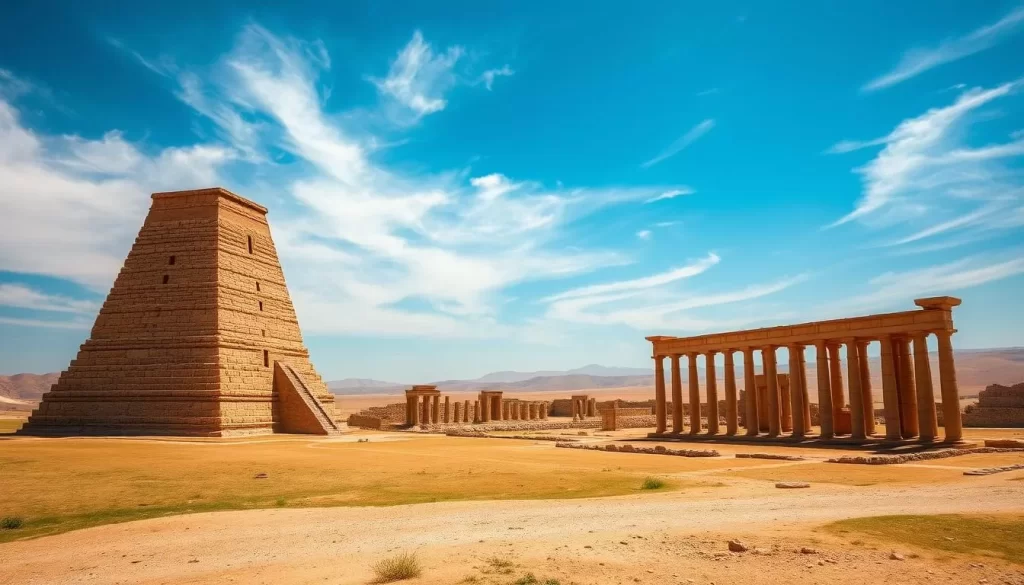
The Great Ziggurat of Ur is a highlight, standing as a testament to ancient engineering. Built around 2100 BCE, this structure was a spiritual hub for the Sumerians. Its towering presence and intricate design make it a must-visit site for anyone exploring this city.
Another key attraction is the Royal Cemetery of Ur. Discovered in the 1920s, these tombs reveal the grandeur of Sumerian royalty. Artifacts like the Standard of Ur and the Queen’s Lyre showcase the artistry of this ancient civilization.
Here are some other must-see locations:
- The Citadel of Erbil, one of the oldest continuously inhabited places in the world.
- The Red Security Museum in Sulaymaniyah, which details the region’s turbulent history.
- The Mesopotamian marshes, a unique ecosystem and cultural hub.
To make the most of your visit, consider hiring a local guide. They can provide valuable information and help you navigate checkpoints with ease. Using a taxi is also a convenient way to explore these sites, especially in the cooler months.
These landmarks are more than just ruins; they are windows into a rich cultural heritage. By exploring them, you’ll gain a deeper appreciation for the history and traditions of this remarkable region.
Discover Amarah: A Hidden Gem of Mesopotamia
Amarah, a lesser-known treasure by the Tigris River, offers a unique glimpse into Mesopotamian history. This city is a hidden gem, rich in cultural heritage and vibrant traditions. Its strategic location has made it a hub for trade and cultural exchanges throughout the centuries.
Walking through Amarah, you’ll feel the echoes of its past. The city played a significant role in the region’s development, with its roots tracing back to ancient Mesopotamia. Its streets are lined with stories of resilience and innovation, making it a fascinating place for any visitor.
One of the highlights of Amarah is its connection to the Tigris River. This waterway has shaped the city’s identity, fostering trade and cultural interactions. Today, it remains a vital part of the region, offering scenic views and a sense of timelessness.
For those seeking an authentic experience, Amarah is a perfect choice. Its markets buzz with local life, offering handmade crafts and traditional goods. Engaging with the friendly residents provides a deeper understanding of the city’s soul.
Planning your trip is easy, with taxi services and guides available to help you navigate. Whether you’re exploring historical sites or simply soaking in the ambiance, Amarah promises an unforgettable journey into the heart of Mesopotamia.
For more insights into the cultural heritage of Mesopotamia, visit this detailed resource.
Journey Through the Iraqi Marshlands
Embark on a journey through the serene landscapes of the Iraqi Marshlands, a place where nature and culture intertwine. This unique region, once on the brink of decline, has been revitalized into a thriving ecosystem. It’s a haven for wildlife and a testament to the resilience of local communities.
The Mesopotamian Marshes, one of the largest wetland ecosystems in the world, offer a rare glimpse into a harmonious balance between humans and nature. Designated as a UNESCO World Heritage Site, this area is a must-visit for any traveler seeking an authentic experience.
Reed House Tours and Wildlife Encounters
One of the highlights of your trip will be touring traditional reed houses. These unique structures, built by the Marsh Arabs, showcase the ingenuity of local architecture. You’ll learn about their way of life, deeply connected to the water and the land.
Wildlife enthusiasts will be thrilled by the chance to spot water buffalo, migratory birds, and other species in their natural habitat. The marshes are a sanctuary for biodiversity, offering a peaceful retreat for both animals and visitors.
“The marshes are not just a place; they are a living testament to the resilience of nature and the human spirit.”
Guided boat trips are the best way to explore the marshes. Local guides provide valuable information about the ecosystem and its cultural significance. These tours offer a deeper connection to the region and its people.
| Activity | Details |
|---|---|
| Reed House Tours | Learn about Marsh Arab culture and traditional architecture. |
| Wildlife Encounters | Spot water buffalo, migratory birds, and other species. |
| Boat Trips | Explore the marshes with a knowledgeable guide. |
For a seamless visit, consider hiring a taxi or joining a guided tour. These options ensure you make the most of your time in this remarkable place. For more travel inspiration, check out this 10-day travel itinerary for exploring Iraq.
This journey through the Iraqi Marshlands is more than just a trip; it’s an experience that connects you with nature and the enduring spirit of the local communities.
Savor Authentic Iraqi Cuisine and Street Food
Immerse yourself in the rich flavors of Amarah’s culinary scene, where every dish tells a story of tradition and heritage. This city offers a vibrant mix of traditional recipes and lively street food, making it a must-visit for any food enthusiast. From grilled carp to stuffed vegetables, the flavors here are as diverse as the region itself.
Local Dishes to Try
When in Amarah, don’t miss the chance to try masgouf, a grilled carp dish that’s a staple of Iraqi cuisine. Another must-try is dolma, a flavorful mix of vegetables stuffed with rice and spices. Kebabs, served with fresh bread and tangy sauces, are also a favorite among locals and visitors alike.
Top Restaurants and Street Eats
For a memorable dining experience, head to Al-Qasr or Dijla, two celebrated restaurants known for their authentic dishes. If you prefer street food, Corniche Al-Shatt is the place to be. Here, vendors serve up fresh kebabs, falafel, and other delights in a lively, bustling atmosphere.
Local markets are also a hub for food and community exchange. Stroll through the stalls, savor the aromas of spices, and engage with friendly vendors. It’s a great way to connect with the local culture and discover hidden culinary gems.
For those who want to explore Iraqi cuisine beyond Amarah, consider visiting Eat & Go, a family-owned restaurant in Phoenix that brings authentic Iraqi flavors to the U.S. Their menu features traditional dishes like quzi and kubba, offering a taste of this rich culinary heritage.
Whether you’re dining at a restaurant or sampling street food, Amarah’s culinary scene promises an unforgettable experience. So, grab a taxi, bring a guide, and get ready to savor the flavors of this remarkable city.
Experience Timeless Historical Architecture and Heritage
Step into a world where centuries of architectural brilliance come alive. This region is a treasure trove of diverse styles, from ancient ruins to Islamic and Ottoman structures. Each building tells a story of innovation and cultural exchange, offering a glimpse into the past.
One of the most iconic locations is the Amarah Citadel, a testament to Ottoman-era fortresses. Its towering walls and intricate designs showcase the ingenuity of its creators. Nearby, the Al-Saray Mosque stands as a symbol of Islamic architecture, blending spiritual significance with artistic beauty.
These heritage sites exemplify centuries of architectural innovation. The Basra Museum, for instance, features exhibits that span thousands of years, from Sumerian artifacts to Islamic art. It’s a must-visit for anyone interested in the history of this region.
Restoration efforts have breathed new life into these ancient structures. Local guides often share fascinating stories about the challenges and triumphs of preserving these ruins. Their dedication ensures that future generations can continue to explore and learn from these remarkable places.
For a deeper experience, consider hiring a guide or taking a taxi to explore these sites. They can provide valuable information and help you navigate checkpoints with ease. Whether you’re visiting a mosque or wandering through ancient streets, these locations promise an unforgettable journey into the heart of this city’s heritage.
Don’t miss the chance to explore the Islamic heritage in Karbala, where stunning shrines and vibrant markets await. It’s a perfect addition to your trip, offering a unique blend of history and culture.
Independent Travel Essentials: Itineraries and Insider Tips
Exploring this region on your own terms offers a unique blend of freedom and discovery. Whether you’re drawn to ancient ruins or vibrant markets, independent travel allows you to craft a personalized journey. With the right planning, you can make the most of your trip while staying within budget.
Budget-Friendly Strategies
Traveling on a budget doesn’t mean missing out on key experiences. Start by using shared taxis, which are cost-effective and widely available. For longer distances, intercity buses connect major citys like Baghdad and Mosul at affordable rates.
Accommodation options range from mid-range hotels to budget-friendly stays. Negotiating room prices is common, so don’t hesitate to ask for a better deal. Staying in local neighborhoods also offers a more authentic experience.
Here are some practical tips to save money:
- Use public transportation or shared taxis for short distances.
- Book mid-range hotels and negotiate room rates.
- Carry cash, as credit cards are rarely accepted.
Designing Your Itinerary
Creating your own itinerary gives you the flexibility to focus on what interests you most. Start with must-see places like the Great Ziggurat of Ur or the Royal Cemetery. Allocate at least a day for each major site to fully appreciate its history.
For a deeper understanding, consider hiring a guide. They can provide valuable information and help you navigate checkpoints with ease. This is especially useful when visiting restricted areas.
For more travel inspiration, check out this essential information for independent travelers. It includes a suggested itinerary and tips for navigating the region.
By planning ahead and using these strategies, you can enjoy a memorable and cost-effective trip. Whether you’re exploring ancient ruins or bustling markets, independent travel offers a unique way to connect with this remarkable place.
Day Trips and Nearby Attractions for Extended Adventures
Extend your journey with day trips that uncover hidden gems beyond the main sites. These excursions offer a chance to explore natural wonders, ancient ruins, and vibrant cultural hubs. Whether you’re a history enthusiast or a nature lover, these nearby attractions promise a richer experience.
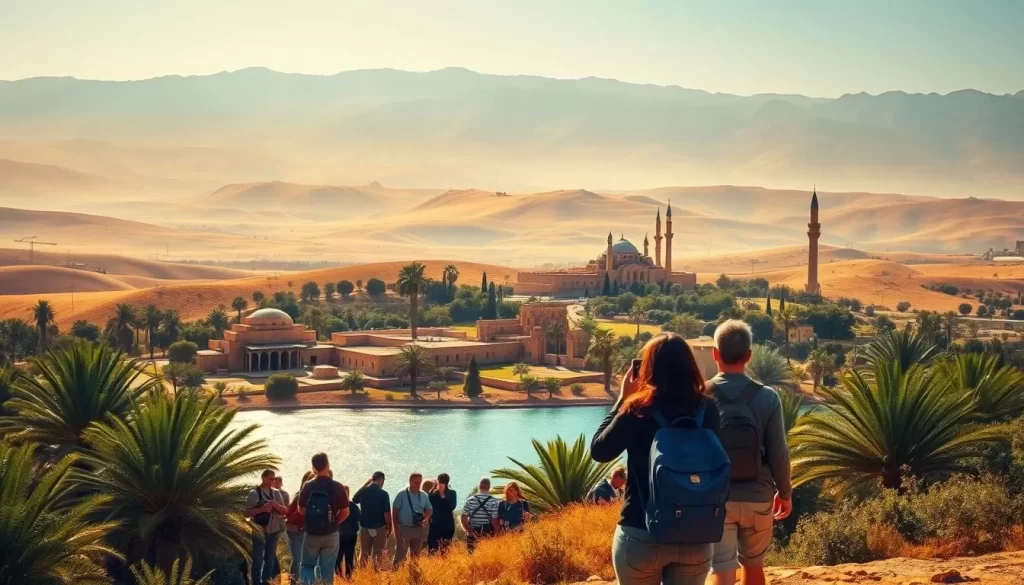
One of the most popular destinations is the Mesopotamian marshes, a UNESCO World Heritage Site. This unique place is a haven for wildlife and a testament to the resilience of local communities. Guided boat tours provide insights into the ecosystem and the lives of the Marsh Arabs.
For history buffs, a visit to Babylon is a must. This ancient city was once the heart of the Babylonian Empire, and its ruins tell stories of a glorious past. Key highlights include the Ishtar Gate and the ruins of the Hanging Gardens, one of the Seven Wonders of the Ancient World.
Here’s a quick guide to planning your day trips:
| Destination | Travel Time | Transport Options | Estimated Cost |
|---|---|---|---|
| Mesopotamian Marshes | 2 hours | Shared taxi or guided tour | $30-$50 |
| Babylon | 1.5 hours | Taxi or minibus | $20-$40 |
| Local Cultural Hubs | 1 hour | Taxi | $10-$20 |
Exploring these areas just outside the city offers a more immersive experience. Hiring a guide can enhance your visit, providing valuable information about the history and culture of each location. Taxis are readily available, making it easy to navigate checkpoints and reach your destination.
“Day trips are not just about seeing new places; they’re about connecting with the heart of the region and its people.”
For a deeper dive into the region’s culture, consider visiting Akre and Lalish, where you can explore scenic spots and significant religious sites. This enriching trip offers a glimpse into the local way of life and the region’s spiritual heritage.
Plan these excursions as extensions to your primary itinerary. They not only enhance your travel but also provide a well-rounded experience of this remarkable place. Whether you’re exploring ancient ruins or serene landscapes, these day trips promise unforgettable memories.
Conclusion
From ancient ruins to vibrant markets, this region offers a journey through time and culture. Each city tells a story of its history, blending the past with the present. Whether you’re exploring archaeological sites or engaging with local communities, the experience is unforgettable.
Practical tips like using a taxi or hiring a guide can make your trip smoother. These insights ensure you navigate checkpoints and discover hidden gems with ease. The diversity of this place promises something for every visitor.
Take the plunge and plan your adventure. This journey will not only enrich your understanding of history but also connect you with the heart of this remarkable region. Your trip here is more than a visit—it’s a life-changing experience.
The above is subject to change.
Check back often to TRAVEL.COM for the latest travel tips and deals.
